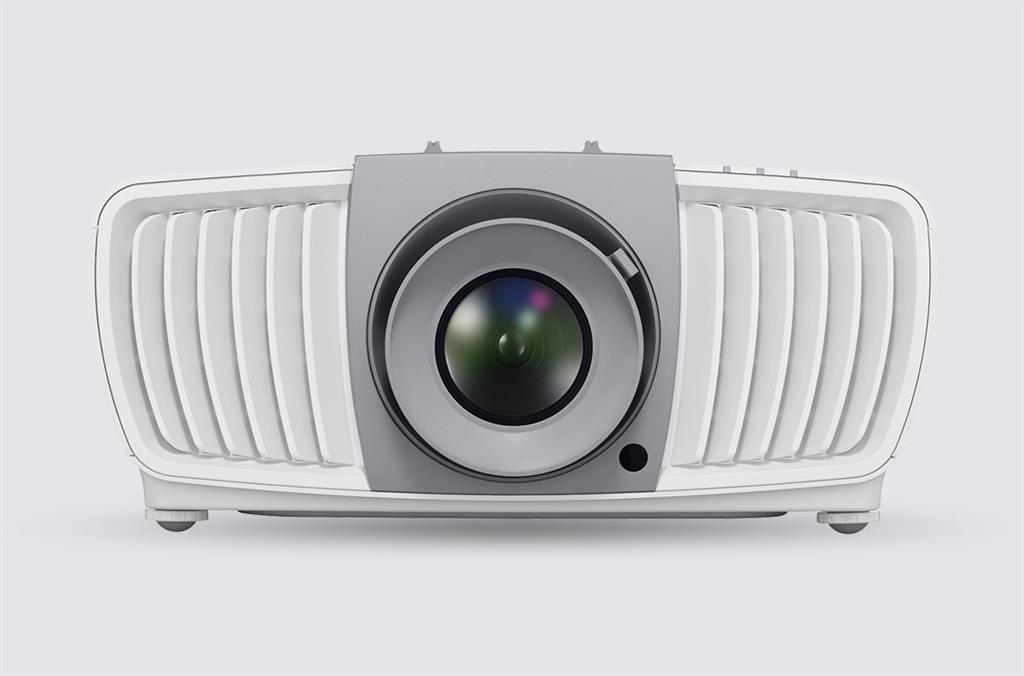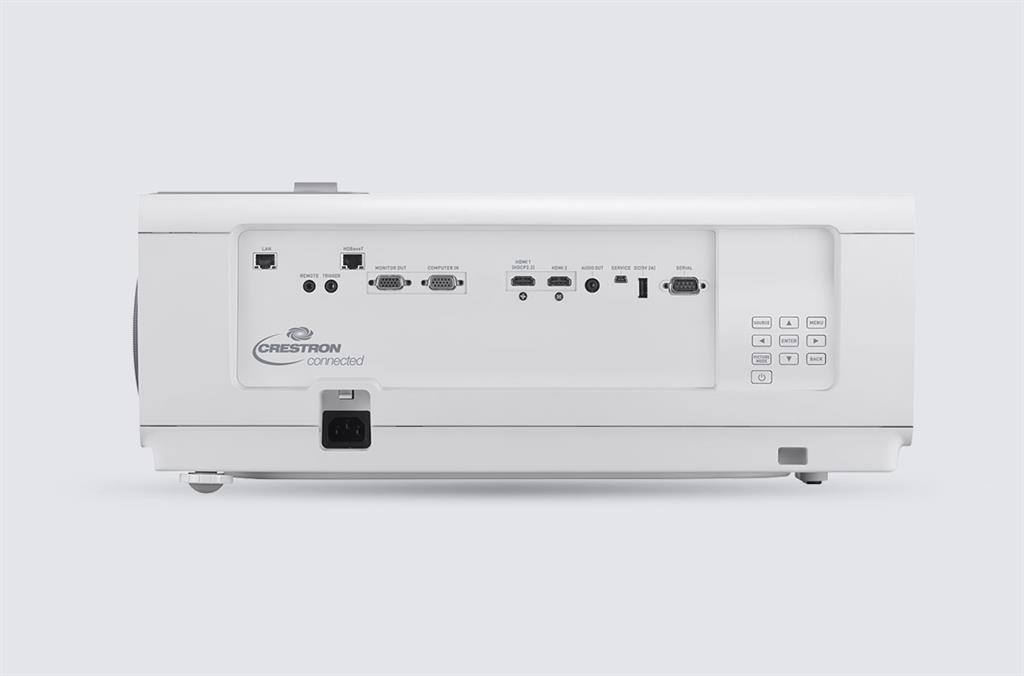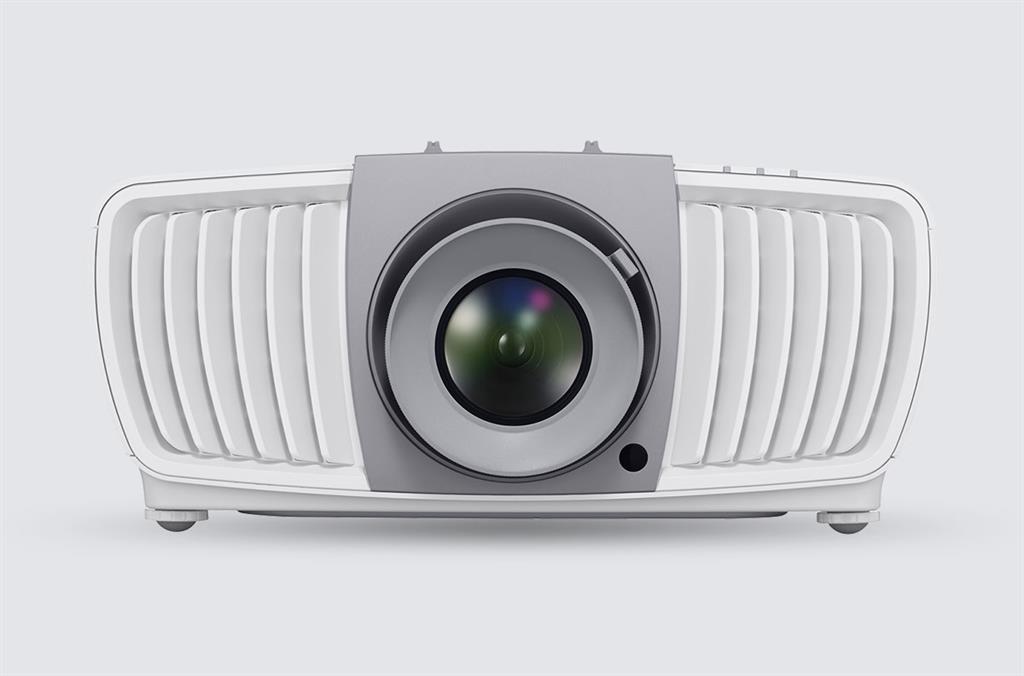I have recommended Casio’s Slim series portable line of projectors for clients over the past six years—and have received nothing but positive reviews. I have yet to receive a support call from our clients about these projectors. Now it’s time to look at Casio’s installation line and its new XJ-L8300HN Ultra-high definition (UHD) solid-state 4K projector. Let’s see if this projector is a solution we’d specify for future installations.Test Setting
I tested the projector in my office. It has windows, but this test was completed at night. I had a few fluorescent lights on during this test, which measured 83 lux while atop a 36-inch-tall desk. We used a Da-Lite White Matte screen with a gain of 1.0. The projector was 96 inches away from the screen, and displayed a 64-by-36-inch image. My MacBook Pro serves as the source, with a Crestron HDMI cable connected directly to the projector’s HDMI 1 input.

Setup
The first thing that impressed me was the startup screen. This was the first projector I’ve set up with the installation method screen showing up first. Normally, I have to hunt around for this in the settings menu. This will save installation time on-site.
All the normal features you want to see in an installation projector are present. It has an HDBaseT input, more than one HDMI input, serial control, and a variable audio output for those streamlined systems in classrooms or conference rooms.
Performance
The fan was super quiet. I let the projector warm up for 30 minutes to be sure I was testing under full brightness conditions. The fan speed never fluctuated, nor did I notice an increase in fan speed throughout the test.
The manual adjustment for lens shift and zoom can be either a benefit or drawback. I personally prefer manual adjustment versus electronic, as it takes less time to get it exact. However, if you are installing this projector in a peculiar place or high up, make sure you set the lens shift and zoom correctly the first time. You don’t want to get a lift back on the site just to fix a lens shift or zoom issue.
I first used Extron’s 4:4:4 chroma subsampling test pattern from my MacBook Pro. The resolution displayed was 3840x2160 at 30 Hz, which was expected. What I did not expect were how crisp the lines were and how clear all sizes of text displayed on the screen, compared to what I have normally seen from 4K projectors. No clear compression or odd scaling appeared, and all of the content looked the same as what was being displayed on my laptop, perhaps better.

I was eager to display some motion video and really see how colors replicated. First I used a Sony HDR 4K test video consisting of various nature shots. What captured my attention was the replication of yellows. For reference, I did not change any color settings or make any adjustments to picture settings. I noticed that you can change brightness modes, along with user modes to customize the picture appearance for different users or applications.
Conclusion
Overall, this projector really impressed me. Many of us are familiar with the benefits and overall cost of ownership of lamp-free projectors, yet I was surprised at how well it performed. I was taken aback by how clear the text was, even when presenting very small text in both 4K and 1080p resolutions. The projector’s most impressive attribute was the sharpness and clarity of small lines. Motion video and color representation were seamless. With a price of around $12,000, this projector is positioned for special classroom applications, small theaters, auditoriums, and even advanced video or photo-editing labs.
Justin Rexing, M.S., CTS-D, ISF-C, DMC-E-4K, is the AudioVisual Systems Engineer at Western Kentucky University. Read more of Justin's work here.
- Casio XJ-L8300HN UHD projector
- DLP chip
- 5000 lumens brightness
- 4K UHD resolution, measured at 3840x2160 at 30 Hz
- 8.3M pixels
- 1.5x zoom
- MSRP: $12,000
INFO
Casio www.casiolampfree.com
https://www.casio.com/products/projectors/4k-hd-projectors/xj-l8300hn
